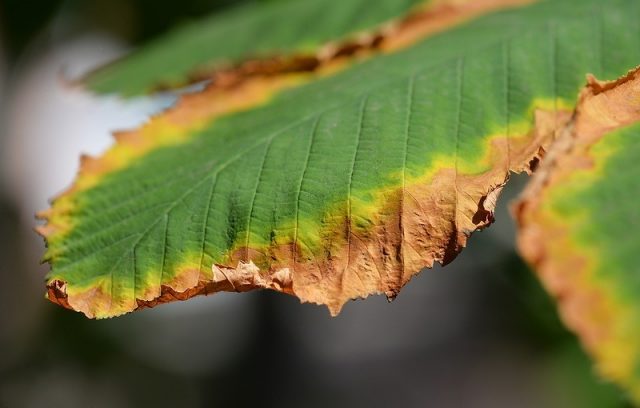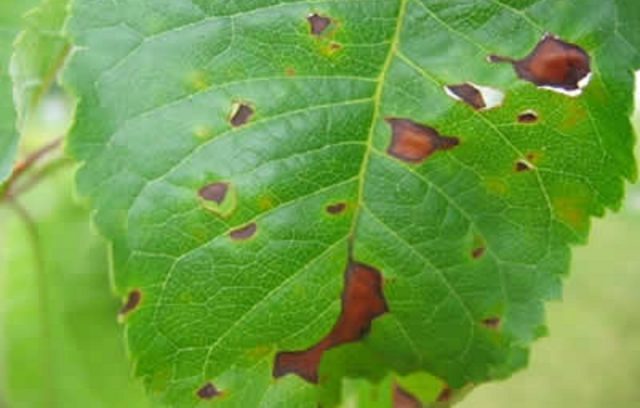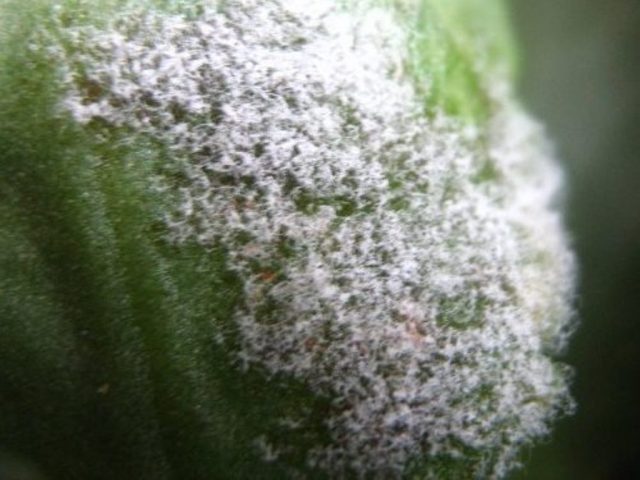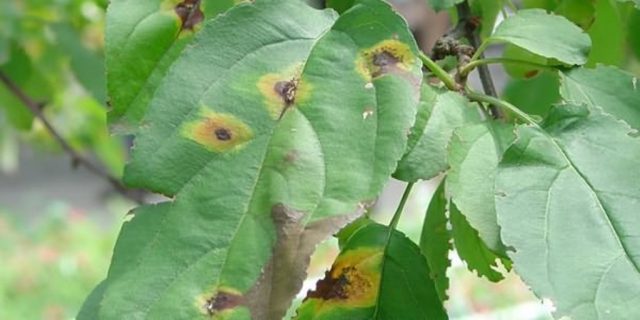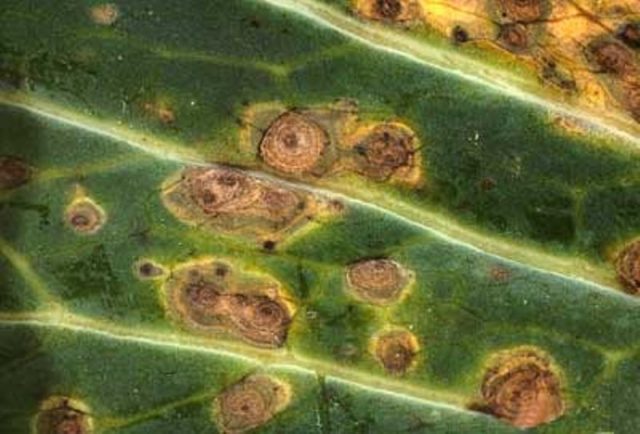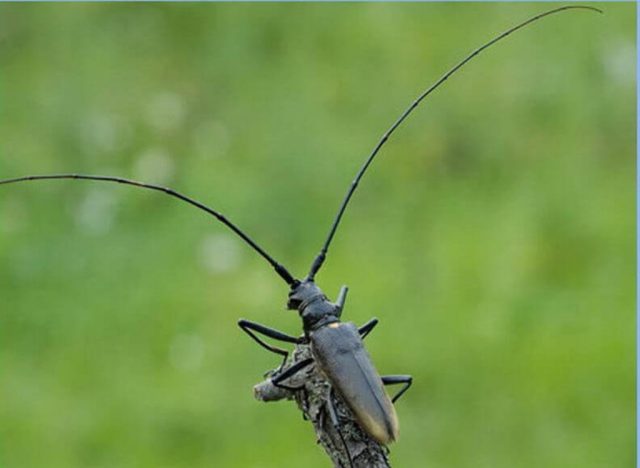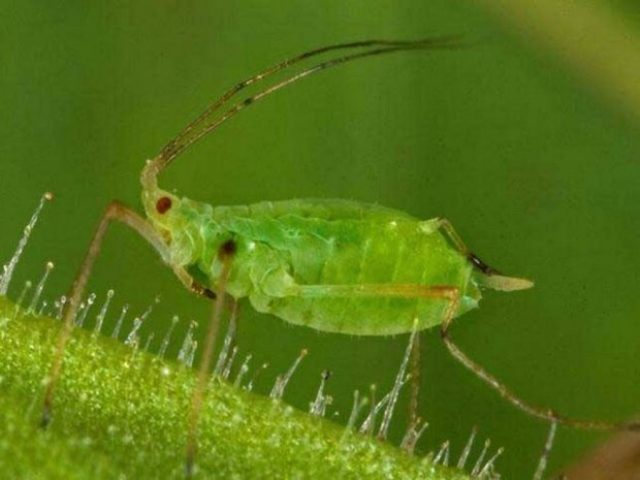Content
Hazelnut or hazel is a popular shrub that can be found in Russian gardens. Despite timely care, often under unfavorable climatic conditions, various diseases of the hazelnut can appear. Diseases and pests are very similar to those often found on other plants. With the observance of preventive measures, you can avoid troubles and reap a rich harvest.
Diseases of hazel and treatment methods
The plant is immune to many diseases, but after a cold winter and in a rainy season, fungal, infectious and bacterial diseases can join. Diseases of the hazelnut without timely care and treatment can lead to the death of the bush. Therefore, when the first symptoms appear, it is necessary to begin timely treatment.
Bacterial burn
The most dangerous disease of hazelnuts is a bacterial burn. Fungal disease damages the entire aerial part: leaves, shoots, flowers and fruits. The disease appears due to high temperature and humidity. In hot and dry weather, the disease is extremely rare.
The main signs of the onset of the disease are numerous black spots.
- When a flower is affected by a disease, it withers, turns dark brown, and falls off.
- Young branches are covered with dark spots, the tips are bent and painted black.
- The leaves take on a charred, drooping appearance, turn brown.
- Affected unripe nuts turn black and remain on the branch until the end of autumn.
- When a disease appears, the bark becomes covered with cracks, an extensive burn with clear boundaries appears on the trunk.
The disease develops in the spring, when the active growing season begins. Disease on hazelnuts appears with pollen. Carriers are birds, insects, rainwater. With an increase in air temperature and humidity by 80% or more, the disease begins to actively progress.
Branches are infected from diseased bark and leaves. The source is non-sterile tools, diseased bushes, fruits and rooting cuttings. A year after infection, a thick, viscous exudate flows out of the ulcers, which is easily carried by the wind, while infecting neighboring plantings.
Treatment of the disease is carried out as follows:
- Pruning damaged shoots to healthy tissue.
- Spraying hazelnuts in the bud swelling phase with 3% zinc sulfate.
- Treatment of hazel with copper-containing preparations.
- Autumn feeding with potash fertilizers.
White rot
White rot or sclerotinia is a dangerous fungal disease that leads to decay of the root system. The main signs of the disease are:
- wilting of the aboveground part;
- the formation of white bloom on the leaf plate, fruits, stem;
- the root system is covered with a snow-white slime-like mass;
- black sclerotic formations are visible on the shoot cut;
- the leaf plate becomes watery and discolored, sometimes covered with a white bloom.
The pathogen infects walnut bushes through the soil. The disease affects hazelnuts with a sharp drop in temperature and high humidity.
First of all, the disease affects the wood of the nut.It loses its elasticity, acquires a fibrous state and a snow-white color, becomes less durable and breaks easily.
To get rid of the disease, it is necessary to carry out complex treatment. At the initial stage of the disease, damaged shoots are cut to healthy tissue, the cut site is treated with potassium permanganate or crushed chalk. Next, the hazelnuts are treated with fungicides, changing them once a season so that there is no addiction. If the disease has affected most of the shrub, it is better to get rid of it so that the disease does not spread throughout the garden.
Brown spot
Brown spot or phyllostictosis is a fungal disease that often affects hazelnuts. The disease spreads through soil, water. The disease is quickly spread from one hazelnut bush to another by wind, insects and birds. It progresses rapidly at high humidity and air temperature.
To recognize the disease, it is necessary to carefully examine the walnut bush. When infected, dark red irregular spots are formed on the leaf blade. At the initial stage of the disease, the central part of the spot is much lighter than the periphery. Over time, the outer side of the sheet becomes covered with small swells.
The disease often affects old, weakened leaves during fruiting. The peak of the disease occurs in early July, especially in rainy weather. The massive development of the disease leads to early leaf fall, which significantly reduces the nut yield in the next season.
Since brown spot is a fungal disease, it must be treated with fungicides. These can be purchased drugs, or folk remedies. When using chemicals, the treatment is completed one month before the hazelnuts are collected. In the treatment of the disease, folk remedies are used:
- Spraying the bush and the trunk circle with iodine chloride (30 g of potassium chloride, 40 drops of iodine in a bucket of water).
- Treatment of a bush with diluted milk whey.
- Spraying the bush with garlic infusion.
Powdery mildew
Powdery mildew is a fungal disease that affects leaves and young shoots. The affected foliage is covered with a white bloom, turns yellow, curls and falls off. New leaves appear deformed and weakened. Young shoots do not ripen when infected, do not grow stiff and, as a result, die from the first autumn frosts.
When the first symptoms of the disease appear, timely treatment must be started, otherwise the disease will quickly spread to neighboring bushes. Without the timely removal of white plaque, a failure occurs in photosynthesis, which further exacerbates the condition of the hazelnuts.
Powdery mildew often appears in moderate humidity and high temperatures. Disease vectors include insects, wind and rainwater. The fungus hibernates on the affected leaves, so if you do not remove the fallen leaves, in the spring powdery mildew attacks the nut bush with renewed vigor.
When a disease occurs, treatment must be started immediately:
- Trim all affected shoots to living tissue.
- Carry out once every 7 days the treatment of the bush with soda ash and soap or garlic infusion.
- Spray the nut with an antibacterial mixture. Terramycin 100 units, penicillin 100 units, streptomycin 250 units diluted in warm water in a 1: 1 ratio.
- A good result is obtained by treating shrubs with slurry. 1 part of manure is diluted with 3 parts of water and left to infuse for 3 days. The finished solution is diluted 1: 3.
Rust
Rust is a common, dangerous disease. The fungus affects the entire aerial part of the walnut bush. As a result, cold hardiness, yield and fruit quality are reduced. When infected, the nut begins to quickly lose moisture, the process of photosynthesis and metabolism deteriorates, and the growth of shoots sharply decreases. If timely measures are not taken, hazelnuts may die.
You can identify the disease on the outside of the sheet plate. At the initial stage of the disease, small dark brown spots appear on it, which eventually spread over the entire leaf plate.
If you do not immediately start treatment, then in the middle of summer, large growths appear on the inside of the foliage. With the further development of the disease, the foliage dries up and falls off. Untimely leaf fall weakens hazelnuts and reduces cold resistance.
Getting rid of rust is carried out in several ways:
- Spraying hazelnuts with copper- and sulfur-containing preparations. Processing is carried out before and during the flowering period.
- In early spring, the affected shoots are cleaned to healthy wood, followed by treatment with disinfectant solutions.
- Pruning affected shoots 5 cm and skeletal branches 10 cm below the lesion. Pruning is carried out before sap flow.
- After pruning, the bush is treated with fungicides at intervals of 10-13 days.
Black spot
Black spot or phomopsis is a dangerous fungal disease that affects the entire aerial part of the hazel. The disease develops intensively in wet weather, affecting the leaves and lignified part of the nut.
You can recognize the disease with a careful examination of the bush. Lignified shoots are discolored, dark spots appear on the bark. If you do not start treatment, the fungus penetrates deeply into the wood, forming rotten areas. Over time, hazelnuts stop growing and develop, and the infected shoots die off. If the disease affects the foliage, then it becomes covered with dark brown spots with a lightened middle. Over time, the leaf plate dries up and falls off. Without treatment, the plant refuses flowering and fruiting.
Black spot is spread by wind, rainwater and insects, through mechanical damage to the shoots.
The disease perfectly tolerates cold winters on plant debris. Experienced gardeners have noticed that if the fallen leaves are removed in a timely manner, the fungus will not have enough nutrition, and it will die in 5 days.
To get rid of the disease, you must:
- process hazelnuts with copper-containing preparations;
- apply an herbal solution.
To do this, the cut grass is poured with water in a 1: 1 ratio and left to infuse for 1 week. The resulting solution is filtered and the bush is treated after sunset.
Hazelnut pests and control
Hazelnuts are loved not only by gardeners, but also by pests. Insects feed on shoots, leaves and nuts. The greatest harm is caused by insects that destroy crops. If you do not fight them, then they can destroy up to half of the crop.
Fruited nut
The nut or nut weevil bore fruit and is widespread in all regions of Russia where hazelnuts are grown. This insect easily destroys up to 50% of the crop. The beetle hibernates in the ground, lays larvae in early spring, which hatch at a temperature of + 15 ° C. The beetle begins to attack the plant in late May and early June.
Insects are located in the crown, where they destroy leaves and young shoots. Females gnaw unripe fruits and lay eggs in them. The revived larvae feed on nuts, completely eating away at the kernel. After the destruction of the crop, the larvae leave the nut and are buried in the ground.
To get rid of beetles, you must:
- treat the soil with insecticides in early spring;
- in early May, the crown is treated with acaricides;
- collect and destroy fallen fruits in a timely manner;
- in spring and autumn, the trunk circle is loosened;
- early in the morning, a wide canvas is spread around the bush, the bush is shaken, the fallen beetles are immediately disposed of.
Walnut barbel
Walnut barbel is the most dangerous pest that can destroy shrubs in a short time.Adult beetles start flying around orchards from early May to mid-June. In mid-June, an adult lays eggs under the bark of young branches. Larvae appear at the end of June. In the first days, the larvae gnaw through the core of the branches, as a result of which the shoots begin to dry out, the upper leaves turn yellow, curl and crumble.
Without treatment, the larvae hide in the bark for the winter and, upon the arrival of warm days, begin to destroy the 3-year-old shoots.
Treatment is carried out immediately after the first signs of the disease are detected:
- dried shoots are removed and burned;
- in mid-June, the walnut is sprayed with insecticides.
Hazel pipe runner
The hazel tube worm is a small beetle that feeds on young foliage. It can often be found at the end of May when the foliage is blooming. Females gnaw a leaf blade ½ of the length, wait for it to dry and roll it into a tube where they lay their eggs. The hatched larvae feed on dry foliage, and for the winter they burrow into the soil of the trunk circle.
The beetle, according to gardeners, does not cause severe damage to the tree. But in order for the plant to look healthy and develop well in early spring, before budding, the crown and the ground are treated with insecticides.
Aphid
Aphid larvae appear on the nut in late spring. Pests suck out the sap from the plant, which leads to slower growth and rapid death. Also, the aphid colony is a good spread of fungal diseases.
Premature leaf fall reduces the palatability of the fruit and the yield. If left idle, aphids can quickly spread throughout the garden.
You can get rid of insects in 2 ways: removing them from the foliage or treating the bush with soapy water. In case of mass infection, the nut is treated with insecticides one month before harvest.
Prevention of pests and diseases of hazelnuts
The yield of hazelnuts depends on timely preventive maintenance. To protect the nut from diseases and pests, you must follow simple rules:
- carry out timely watering and feeding;
- remove damaged, dried out branches;
- in the fall, cut out shoots that thicken the crown;
- in early spring, treat the nut and the soil of the trunk circle with copper-containing preparations;
- when the first signs of the disease appear, remove damaged leaves and fruits;
- get rid of fallen vegetation in the fall;
- destroy adult insects before laying.
Conclusion
Hazelnut diseases are better prevented than cured. Subject to the rules of care and carrying out timely prevention, the walnut bush will delight you with a rich harvest of tasty, healthy fruits.
